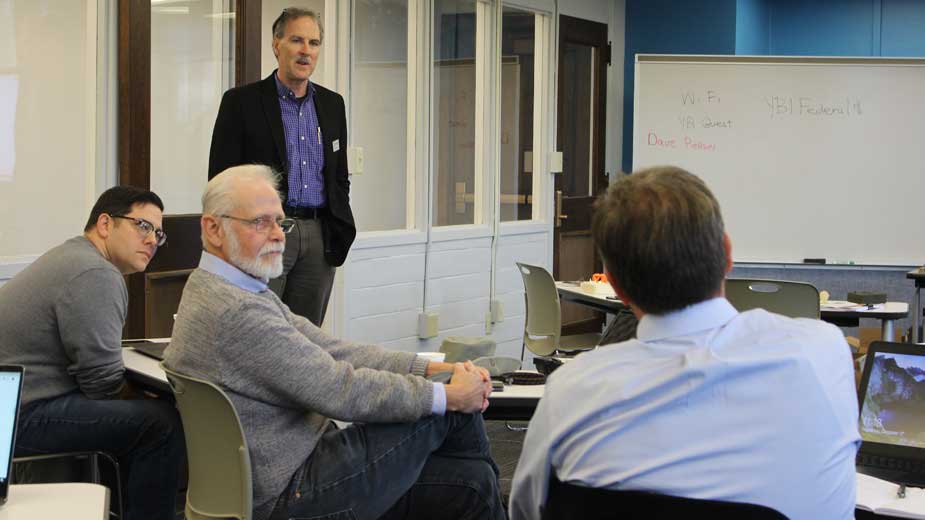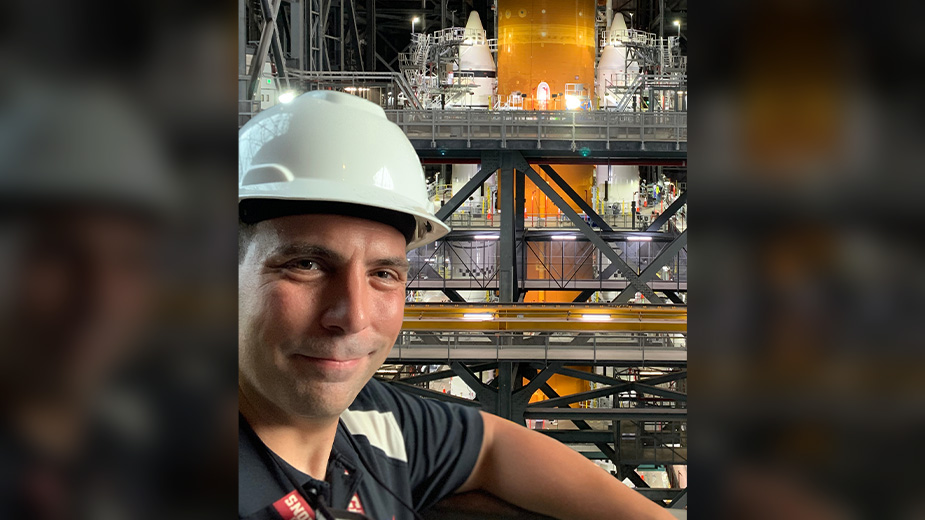Teaching Appalachian Workforce Additive Manufacturing
YOUNGSTOWN, Ohio — A free educational series hosted by the Youngstown Business Incubator offers manufacturers in Appalachian counties an opportunity to explore the possibilities of incorporating additive manufacturing in their processes.
The Appalachian Workforce Education & Training program is designed to support job training efforts and workforce development in 32 Ohio counties, including Mahoning, Trumbull and Columbiana.
The curriculum is rooted in the additive manufacturing expertise of the YBI and designed to facilitate tech integration into traditional manufacturing shops, says Stephanie Gaffney, YBI director of advanced manufacturing programs.
While other parts of the country and the world are adopting 3D printing, “a majority of the companies within Appalachia are not familiar with additive manufacturing,” Gaffney says. Finding resources to learn about it can be difficult and costly, she says, and sometimes companies don’t have the resources to invest in the time and education.
“Having these free classes available takes the pressure off those companies to do that,” she says. “Whether it’s winning a bid because of being able to decrease costs, reduce lead times, whatever it is, we’re giving them all the tools that they need to become more competitive.”
Classes started Aug. 23 and run to April 8. The five topics are Additive 101 – Printing Basics, Advanced Materials, Prototyping and Reverse Engineering, Additive Manufacturing for Tooling Applications and Additive Manufacturing for Metal Casting.
The classes are free to college students and employees working for companies in the Appalachian counties, and cost $300 for a company not in the Appalachian region.
The program was made possible by a $250,000 grant through the Eastgate Regional Council of Governments, which covers the costs of the curriculum, four instructors and subsidizes attendance fees.
Each class has 15 openings and the YBI looks to train 165 workers from 35 companies, as well as 32 students. Curriculum blends classroom time with hands-on training and covers the basics of additive manufacturing, and is tailored to be relevant to the needs of manufacturing shops operating within the region.
For example, the metal casting class is geared toward those working in foundries, because Ohio “per capita has the most foundries in the United States,” according to Gaffney.
Past classes on additive manufacturing for tooling applications got “good traction,” so Gaffney ensured tooling was included in this round of classes as well, she says. Such classes are ideal for tool and die shops, hydro formers, plastic injection molders, metal fabricators and mold makers, she says.
The goal is to get attendees thinking about additive manufacturing processes that could be implemented into their daily work, then continue working with them after the classes are over to help them implement such processes in their shop, she says.
Participants are encouraged to bring parts to class to see how the 3D scanning and printing technology works.
“Anything that’s being produced internally in their tool shop that can be done on a pretty minimal $3,000 3D desktop printer, we will teach them how to do that,” she says.
On Oct. 17, during the first of two tooling classes, participants learned about industrial applications of additive manufacturing for low-volume tooling. Their instructor was Dave Pierson, senior product development engineer for Magnet, the Manufacturing Advocacy and Growth Network based in Cleveland.
Nick Leone, a tooling engineer by trade, took the class to learn how to use additive manufacturing to make his daily work more efficient, he says. Currently, he uses additive manufacturing for prototyping, but is exploring it as a way to shorten lead time.
“In my industry, we’re always looking for faster ways to generate tooling when something breaks,” Leone says. “It’s a very valuable tool to have in the toolbox for a lot of different things. It doesn’t replace existing manufacturing methods, but it enables things to be done that weren’t able to be done before.”
Pete Sabatino, a CNC programmer with VAM USA, agrees and says it made good sense to take advantage of the free classes.
Sabatino recognizes that competitors are “already dipping their toes in,” so the classes at YBI are proving to be a boon for learning more about the technology and having an opportunity to bounce ideas off of experts in the field.
Vallourec and VAM USA are in “the infancy” of their additive manufacturing endeavors, Sabatino says. The company has an international additive manufacturing steering committee with representatives from France, England, South America and the United States who identify capabilities and how to incorporate additive manufacturing technology throughout the company.
“We are all working on how this integrates into our company from product augmentation to, right now, supplementing our maintenance spare parts catalog,” he says. “It’s an opportunity for us to see just how it fits into what we do and how it can make things more efficient.”
Like Leone, being able to reduce time on innovation “is huge,” Sabatino says. However, while it’s more expedient, additive manufacturing presents concerns with protecting intellectual property because now an innovation isn’t something that goes through a formal process, he says.
“It’s immediate. An idea comes and there it is,” he says. “An idea is brought into fruition within 24 hours, whereas before an idea was a project that needed to take 12 weeks.”
Sabatino acknowledges there is quite a learning curve with implementing 3D printing, which represents more than just an equipment change, he says.
It requires a “paradigm shift” in education, understanding and “a visualization of what we’re trying to accomplish,” he says.
That learning curve is one of the biggest obstacles preventing manufacturers from adopting the technology, says Magnet’s Pierson. As an instructor, he says his goal is to break down the information so small- to medium-sized businesses can understand it and have a better chance of successfully adopting the technology into their work.
“It’s so new and so dynamic,” Pierson says. “I’m in this space all the time and it’s sometimes challenging for me to keep up.”
Once a manufacturer understands the technology and its benefits, “there’s a huge amount of enthusiasm,” Pierson says. But before investing in a machine, he advises manufacturers to come to the YBI, America Makes or Magnet to get a part printed and verify whether additive manufacturing would be a viable solution for the company,.
Having those organizations available benefits manufacturers who “rarely have time to take a lunch let alone learn about a new technology,” says Geoffrey Stuk, a consultant with Occams Razor Engineering. Stuk works primarily with small- to medium-sized conventional manufacturers that employ 10 to 50 workers.
He attended the class to learn more about the technology as well as understand what teaching and training resources are available for his clients to get them thinking about implementation and taking the classes, he says.
“Tooling is a comfortable way to get them started,” Stuk says. “There’s probably more fixtures in tooling applications in every manufacturing business.”
Response to the classes has been good, reports Michael Bianco, YBI’s engineering project manager, advanced manufacturing. Bianco helped teach the Additive 101 class and says most participants have been receptive to the idea of incorporating 3D printing in their shops.
“They had a lot of questions. The class actually went over about 15 minutes because we had so many questions,” he says. “A very high percentage have signed up for the rest of our classes as well.”
After the classes, participants “know enough to be dangerous,” says the YBI’s Gaffney, and can likely identify some opportunities with additive manufacturing in their workplace.
YBI is working to obtain additional funding to help companies implement demonstration projects when they’re at that point so they can implement the technology, she says.
“After we put the students through the classes, we survey them to see what are some additional training and education they would like to see,” Gaffney says. “We’re hoping to broaden the course offerings.”
Expansion is dependent on participation in the first round of classes, she says. The YBI may take the classes on the road to teach on-site, depending on the interest.
Those interested in taking the classes can learn more by contacting Gaffney at sgaffney@ybi.org or by calling 330 503 0561.
Pictured: Dave Pierson, senior product development engineer for Magnet, teaches the course on tooling applications. R. Wesley Starr, director of Open Space in East Liverpool, and Pete Sabatino, a CNC programmer with VAM USA, listen in.
Copyright 2024 The Business Journal, Youngstown, Ohio.



